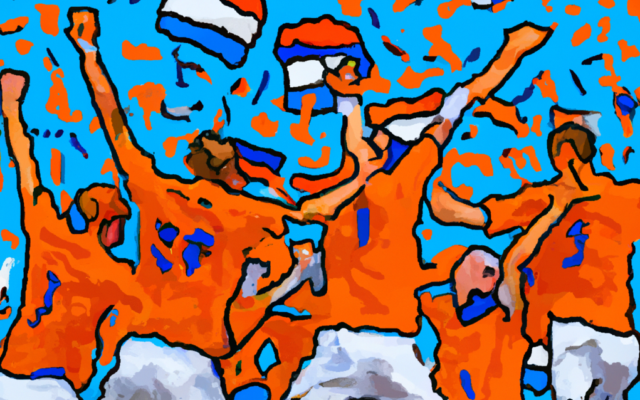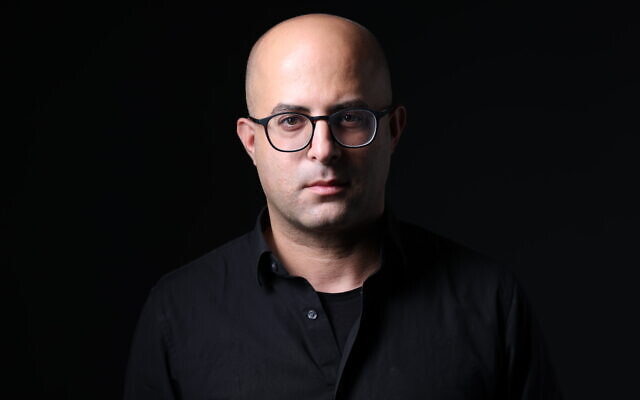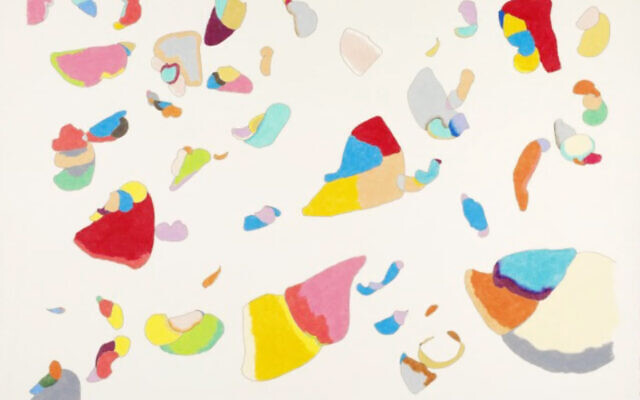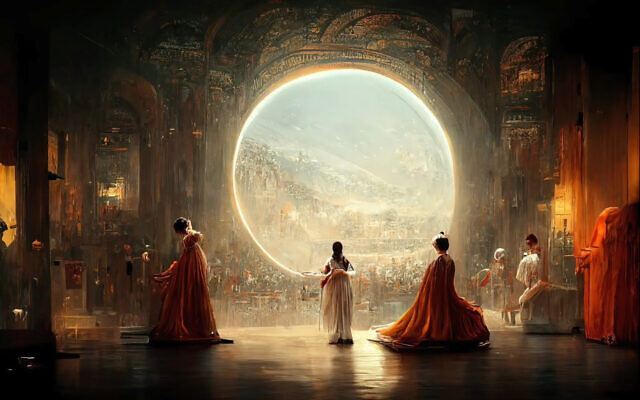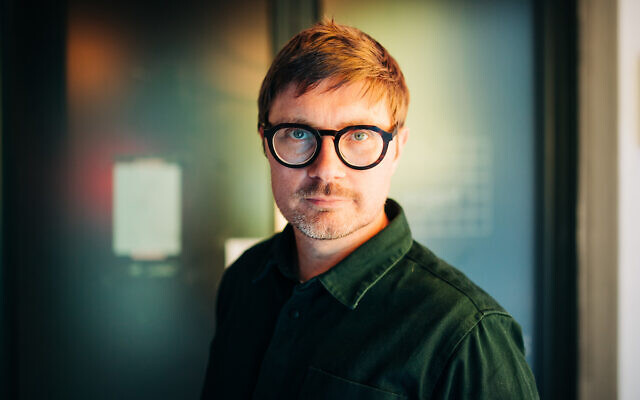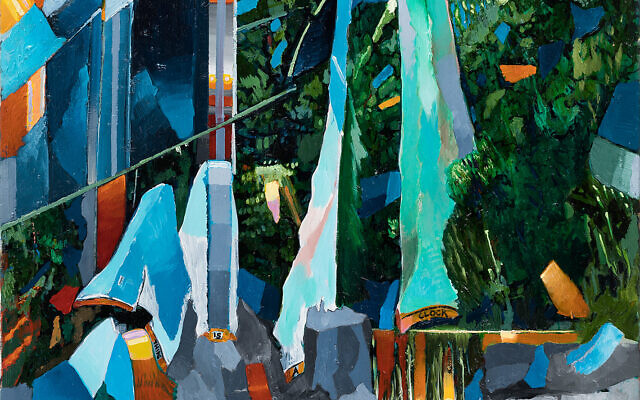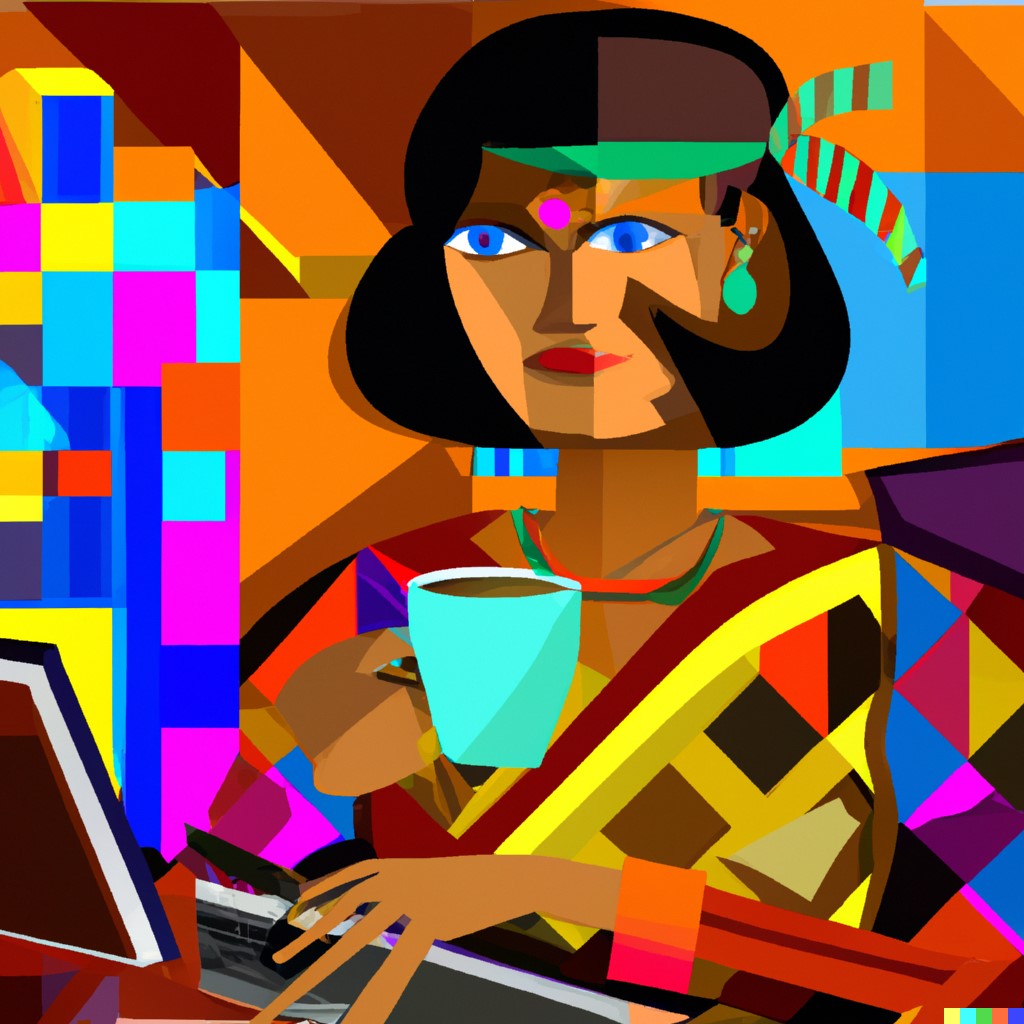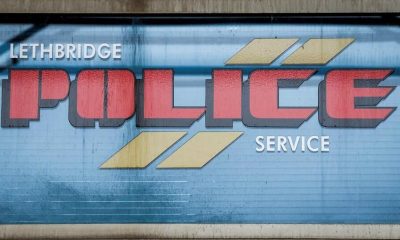Art
Paint by algorithm: Can AI make art, or is it all just derivative?
At the Tate Modern in London last month, visitors walked through the exhibition rooms soaking in the short, multicolored brushstrokes with which French artist Paul Cezanne created his still lifes, portraits and landscapes and marveling at his creativity, talent and impact on 20th-century art.
But now, a century-plus after his death, artificial intelligence technology is able to replicate his work in seconds.
In fact, today’s AI systems can create any image in any style — from impressionism to cubism to pop art. All they need is a detailed prompt.
The creative world is abuzz with potential. Previous progress in AI made it possible for computers to compete with humans in analytical areas, leaving creative work to the artists, writers, and designers. Now, however, the new field of “generative AI” is giving machines the ability to create works that are completely new, drawing inspiration from the vast amount of online data and knowledge that has accumulated over centuries.
This has the potential to revolutionize human creativity, experts say, making professionals from software engineers to writers to artists dramatically reassess how they work.
The incursion of AI into the arts raises questions about how important human input will continue to be in the creative process. Can there be art without an artist? If the art is created by a machine, to whom does it belong? What are the hidden dangers to society and humanity? The Times of Israel spoke to experts to try and shed light on some of these issues.
The overall conclusion is that the creative industry has no choice but to embrace AI. Rather than ousting human artists, the technology will collaborate with them to create new kinds of works, further stretching their inventiveness and creativity and together creating something entirely new.
‘Paint by numbers’ in the AI age
Artificial intelligence — the tech that gives computers the ability to learn — has been around since the 1950s. But over the last decade the field has enjoyed a renaissance made possible by the huge amount of data available online and the higher computational power of chips. Advances in the field over the last 10 years have enabled computers to analyze datasets and find useful patterns to solve problems, with the machine often outwitting the human brain. Creativity, however, has remained mostly in the domain of artists.
Now, software programs such as ChatGPT, DALL-E, Midjourney and Stable Diffusion are making huge strides forward in creativity. And while these tools used to be available only to researchers and a small group of invitation-only testers, an earthquake is underway: They are being publicly released and can be easily used by all, in what some say is becoming a “democratization” of creativity.
An image generated by DALL-E, a deep learning model developed by OpenAI, to the prompt: ‘Dutch football team rejoicing in World Cup win in the style of Van Gogh.’ (Image generated with the assistance of DALL-E)
On November 30, OpenAI, an AI research company co-founded by Elon Musk in late 2015 and backed by Microsoft, widely released its ChatGPT bot prototype, capable of generating sophisticated text in response to prompts and questions. The bot attracted more than 1 million users in five days, according to OpenAI’s president and co-founder Greg Brockman, wowing users with its potential to disrupt homework, journalism, code writing, academic papers, literature and more.
Other software is creating ripples in the art and design world: DALL-E, developed by OpenAI and released to the public in a beta trial in November; Midjourney, which released an open beta in July; and Stable Diffusion, which has developed a deep learning text-to-image model, also released this year.
These AI-based image-generation technologies can create people, objects and locations and mimic whole visual styles based on user requests, or prompts. Obeying simple text instructions, the latest version of DALL-E, for example, can create realistic images of a polar bear playing bass or a robot painted like a Picasso work.
The fact that these services, which once served a closed audience of researchers, are now being released to the wider public is already having “a significant impact on creativity and on culture,” said Asaf Hanuka, head of the visual communications department at Shenkar College of Engineering, Design and Art in Ramat Gan. “All of this is happening right now,” he said in a phone interview.
Shenkar, which held a conference earlier this month in Tel Aviv about creativity in the era of AI, highlighting the pros and cons of the technology, is already seeing students using these tools in their final projects, Hanuka said.
Asaf Hanuka, head of the visual communications department at the Shenkar College of Engineering, Design and Art. (Tal Shachar)
Art or artifice?
Artists have experimented with AI for their work almost from the advent of the technology.
Artist Harold Cohen was a pioneer of computer art who developed, starting in the 1970s, an art-creating program called AARON — “the world’s first pure AI artist,” according to a description of one his works at the Victoria & Albert Museum. Cohen’s software, however, was not open source and thus not publicly accessible, and AARON’s development ended with Cohen’s death in 2016.
In recent years, however, AI in the arts “has exploded,” said Drew Hemment, a professor of Data Arts & Society at the University of Edinburgh and a fellow of the Alan Turing Institute. This is due both to “advances in the technology, and the release of powerful new tools.”
“AI gives artists superpowers,” Hemment said in an email interview. “Today artists can craft images, or sound, or anything they can imagine, that harness the creative powers of artists that have gone before, and fuse human intuition with advanced computational technology.”
A screenshot from a video of art made by AARON, a robot developed by artist Harold Cohen (YouTube, used in accordance with Clause 27a of the Copyright Law)
“Today, we see artists working with AI in highly imaginative ways, as both tool and topic,” he added. “Artists are at the forefront in pushing the boundaries of the technology.”
In June this year, Cosmopolitan used DALL-E 2 to generate the world’s first “artificially intelligent magazine cover,” with a prompt that asked the software to create a “wide-angle shot from below of a female astronaut with an athletic feminine body walking with swagger toward camera on Mars in an infinite universe, synthwave digital art.”
The results were used on the cover of the magazine’s AI Issue.
In the US, Jason Allen won first prize, beating 20 other artists, for his “Théâtre D’opéra Spatial” submission at the Colorado State Fair’s fine arts competition at the end of August this year. The artwork had been created in large part using the AI tool Midjourney, but the judges couldn’t tell. This created a huge debate on the meaning of art, and Allen faced accusations of deceptiveness.
Jason Allen’s work, ‘Théâtre D’opéra Spatial’ won first prize in the Colorado State Fair’s fine arts competition in August 2022. The artwork was created in large part using the AI tool Midjourney. (Screen grab, used in accordance with Clause 27a of the Copyright Law)
“We are in the midst of a very, very rapid evolution, or maybe even a revolution, of the machines seeping into these creative art domains,” said Yoed Kenett, an assistant professor at the Faculty of Industrial Engineering & Management at the Technion- Israel Institute of Technology. “Does this mean that it’s the end of the art profession? I don’t think so. It just changes what it means to be an artist. And I think that is great.”
“Creativity is about the ability to connect, create new combinations, generate new ideas, based on old ideas, make analogies, make metaphors,” said Kenett. “That together allows us to create this magic.”
Can computers take out an artistic license?
According to Wikipedia, “art is a diverse range of human activity, and resulting product, which involves creative or imaginative talent expressive of technical proficiency, beauty, emotional power or conceptual ideas.”
So, can art made by a computer be considered art? Can a computer become the artist?
“To me, it makes no difference which tools an artist uses, I am only concerned with the quality of the art. We can make art with paintbrush and easel, or with data and algorithms. It is art if it moves us, if it is aesthetically interesting,” said the University of Edinburgh’s Hemment.
Drew Hemment, a professor of Data Arts & Society at the University of Edinburgh and a fellow of the Alan Turing Institute. (Andrew Perry)
Rather than removing the human from the equation, AI will be a new arrow in an artist’s quiver, explained Shenkar’s Hanuka.
“In creativity there are two main questions: why we do something and how we do it,” he said. “The computer does not create art. It cannot choose.” The “why” is still the sole domain of the human artist, with the machine serving as a “very eager helper and assistant.”
Art is always “a dialogue between the creator and their work tool,” he added.
Israeli artist Oren Eliav, who lives and works in Tel Aviv, has had exhibitions of his work in galleries in Israel, France and Italy, the US, and the UK among others. His first solo exhibition in the Israel Museum was inspired by 15th-century Italian painter Giovanni di Paolo’s “The Death of Lucretia.” In his work, Eliav deconstructed the original painting and created 20 large images focusing on different sections of Di Paolo’s composition.
“As an artist I always work with a DNA that is not my DNA,” he said in a phone interview. “I always ask a question in front of an image I didn’t create. My artistic work is to ask, it is a dialogue” with the work of the other artist.
During the coronavirus lockdowns in 2020, Eliav started tinkering with the image-creating AI tools available at that time. Using generative adversarial network technology, GAN — one of the first attempts to generate images, which began in the mid-2010s — he created a sequence of evolving forms, which were used as reference for his hand-painted oil-on-canvas works. The paintings, along with an original poem, became “The Moon is a Mirror” exhibition at the Braverman Gallery in Tel Aviv, which ran from January to March 2022. The project continues as a long-form video work, to be released next year.
An oil on canvas painting made by Oren Eliav, artist and lecturer at Shenkar, from the exhibition ‘The Moon is a Mirror,’ Jan-March 2022 at Braverman Gallery. (Elad Sarig)
“In my work, what I ask the machine is to start imagining. Then I match the imagination of the machine with my imagination, and something that I cannot anticipate ahead of time is created, which puts me at a very interesting point as a creator,” he said.
The AI technologies available today, he said, are an added tool in his creative kit.
“When a person is creative, and creates, they will use all of the tools that are available,” he said. “If a person is not creative and not original, even if they have all the coolest tools, they won’t be able to get an original output. These technologies are like a musical instrument: everything depends on who is using them.”
Dangers lurk on the margins
Despite the advances, these new AI technologies come with pitfalls. Bias is one of them. All AI systems depend on what information they are fed – and thus they could perpetuate any existing prejudice and biases they are trained with. Facial recognition software, for example, has come under fire by civil liberties activists for being biased against people of color because of skin-type and gender bias intrinsic to the systems.
To prevent misuse or the perpetuation of violence, curbs have been inbuilt into generative AI software. For example, OpenAI’s ChatGPT uses a Moderation API to warn against or block certain types of unsafe content. The firm has also limited DALL-E 2’s ability to generate violent, hateful or adult images, and political content, according to its website.
But this limits the software’s creativity, said Hanuka, since art does depict violence and death and is often a political statement. “’Guernica’ of Picasso is an image of war,” he noted.
In addition, Hanuka said, because these generative AI tools collect and synthesize information from existing content, the natural inclination for them will be to work with images and items that are familiar and mainstream — which may lead to predictable, boring results.
“Algorithms prefer what is familiar, and the margins tend to disappear,” Hanuka said. “But actually, many times, innovation comes from the margins.”
There is also the issue of intellectual property. AI art creates images using models that have been trained on the original work of other people and artists. This raises ethical and practical questions.
“One major concern is that current industry standard AI models have been trained on massive datasets scraped from the internet such as images, or news. That happens without permission, or awareness, or fair pay for the original creators. This still needs to be tested in the courts, but it is obviously plain wrong,” Hemment said.
“I expect to see a new generation of models trained on licensed images, but that brings a new problem, as only a small number of big players have the scale to do that. That leads to further centralization, with an ever-decreasing group of companies calling the shots.”
The internet and social media were hailed early on for their ability to democratize information and make the world more connected. Yet both have also enabled privacy infringement and political manipulation.
The lessons learned in the past 20 years must now be used to make sure legal frameworks are in place to tackle generative AI, said Tehilla Shwartz Altshuler, a senior fellow at the Israel Democracy Institute and an expert in law and technology.
“We know today that those different platforms that allow us to create our own content must have some kind of responsibility for the outcome created on top of them,” she said. “This is what is happening today with social media platforms, but the next frontier is going to be the generative AI platforms. These platforms are not going to grow up in a vacuum, because this is 2023, and not 2000. There is a lesson we have learned in the past two decades.”
Curbs on pornography, terror and violence should be enforced on these platforms, she urged, and detection systems should be created to help us sort truth from lies and to show us where, when and from what source a certain piece of content was created.
The wow factor
For the sake of testing out the technology, this reporter used Dall-E to create two images. After signing with a username and password, I put in the following prompts: Woman journalist at desk working at laptop with a cup of coffee. In just a few seconds, four images were created, one of which is shown here.
An image created by DALL-E, a deep learning model developed by OpenAI, to the prompt: ‘Woman journalist sitting at her desk with a laptop and a hot mug of coffee in cubism style,’ December 2022. (Image generated using DALL-E with a prompt by by Shoshanna Solomon)
The second prompt, to make my Dutch husband happy, was the following: Dutch soccer team rejoicing in the win of the World Cup in the style of Van Gogh. That image, which I plan to give him as a consolation prize for his team’s loss, is also reproduced here and was also created in seconds.
So, whatever hidden dangers these new technologies may hold, it is clear that AI is here to stay in the creative sphere. Just as we have largely ceded our navigation abilities to Waze and our information gathering to Google, so will we hand over greater chunks of the creative process to the machine.
The technology will allow a greater number of people to be creative, said the Technion’s Kenett, giving them tools to express themselves even if they don’t know how to write well or paint well, allowing for a democratization of creativity.
And the issue of whether or not AI was used in a given work of art will quickly become irrelevant, said Shenkar’s Hanuka.
“Did you use a machine, yes or no, is something that is not relevant and will disappear with time,” said Hanuka. “It doesn’t really matter. What matters is the results you get. A creation that will have success, which creates impact, is what we will remember.”
Art
Calvin Lucyshyn: Vancouver Island Art Dealer Faces Fraud Charges After Police Seize Millions in Artwork

In a case that has sent shockwaves through the Vancouver Island art community, a local art dealer has been charged with one count of fraud over $5,000. Calvin Lucyshyn, the former operator of the now-closed Winchester Galleries in Oak Bay, faces the charge after police seized hundreds of artworks, valued in the tens of millions of dollars, from various storage sites in the Greater Victoria area.
Alleged Fraud Scheme
Police allege that Lucyshyn had been taking valuable art from members of the public under the guise of appraising or consigning the pieces for sale, only to cut off all communication with the owners. This investigation began in April 2022, when police received a complaint from an individual who had provided four paintings to Lucyshyn, including three works by renowned British Columbia artist Emily Carr, and had not received any updates on their sale.
Further investigation by the Saanich Police Department revealed that this was not an isolated incident. Detectives found other alleged victims who had similar experiences with Winchester Galleries, leading police to execute search warrants at three separate storage locations across Greater Victoria.
Massive Seizure of Artworks
In what has become one of the largest art fraud investigations in recent Canadian history, authorities seized approximately 1,100 pieces of art, including more than 600 pieces from a storage site in Saanich, over 300 in Langford, and more than 100 in Oak Bay. Some of the more valuable pieces, according to police, were estimated to be worth $85,000 each.
Lucyshyn was arrested on April 21, 2022, but was later released from custody. In May 2024, a fraud charge was formally laid against him.
Artwork Returned, but Some Remain Unclaimed
In a statement released on Monday, the Saanich Police Department confirmed that 1,050 of the seized artworks have been returned to their rightful owners. However, several pieces remain unclaimed, and police continue their efforts to track down the owners of these works.
Court Proceedings Ongoing
The criminal charge against Lucyshyn has not yet been tested in court, and he has publicly stated his intention to defend himself against any pending allegations. His next court appearance is scheduled for September 10, 2024.
Impact on the Local Art Community
The news of Lucyshyn’s alleged fraud has deeply affected Vancouver Island’s art community, particularly collectors, galleries, and artists who may have been impacted by the gallery’s operations. With high-value pieces from artists like Emily Carr involved, the case underscores the vulnerabilities that can exist in art transactions.
For many art collectors, the investigation has raised concerns about the potential for fraud in the art world, particularly when it comes to dealing with private galleries and dealers. The seizure of such a vast collection of artworks has also led to questions about the management and oversight of valuable art pieces, as well as the importance of transparency and trust in the industry.
As the case continues to unfold in court, it will likely serve as a cautionary tale for collectors and galleries alike, highlighting the need for due diligence in the sale and appraisal of high-value artworks.
While much of the seized artwork has been returned, the full scale of the alleged fraud is still being unraveled. Lucyshyn’s upcoming court appearances will be closely watched, not only by the legal community but also by the wider art world, as it navigates the fallout from one of Canada’s most significant art fraud cases in recent memory.
Art collectors and individuals who believe they may have been affected by this case are encouraged to contact the Saanich Police Department to inquire about any unclaimed pieces. Additionally, the case serves as a reminder for anyone involved in high-value art transactions to work with reputable dealers and to keep thorough documentation of all transactions.
As with any investment, whether in art or other ventures, it is crucial to be cautious and informed. Art fraud can devastate personal collections and finances, but by taking steps to verify authenticity, provenance, and the reputation of dealers, collectors can help safeguard their valuable pieces.
Art
Ukrainian sells art in Essex while stuck in a warzone – BBC.com
[unable to retrieve full-text content]
Ukrainian sells art in Essex while stuck in a warzone BBC.com

Source link
Art
Somerset House Fire: Courtauld Gallery Reopens, Rest of Landmark Closed
The Courtauld Gallery at Somerset House has reopened its doors to the public after a fire swept through the historic building in central London. While the gallery has resumed operations, the rest of the iconic site remains closed “until further notice.”
On Saturday, approximately 125 firefighters were called to the scene to battle the blaze, which sent smoke billowing across the city. Fortunately, the fire occurred in a part of the building not housing valuable artworks, and no injuries were reported. Authorities are still investigating the cause of the fire.
Despite the disruption, art lovers queued outside the gallery before it reopened at 10:00 BST on Sunday. One visitor expressed his relief, saying, “I was sad to see the fire, but I’m relieved the art is safe.”
The Clark family, visiting London from Washington state, USA, had a unique perspective on the incident. While sightseeing on the London Eye, they watched as firefighters tackled the flames. Paul Clark, accompanied by his wife Jiorgia and their four children, shared their concern for the safety of the artwork inside Somerset House. “It was sad to see,” Mr. Clark told the BBC. As a fan of Vincent Van Gogh, he was particularly relieved to learn that the painter’s famous Self-Portrait with Bandaged Ear had not been affected by the fire.
Blaze in the West Wing
The fire broke out around midday on Saturday in the west wing of Somerset House, a section of the building primarily used for offices and storage. Jonathan Reekie, director of Somerset House Trust, assured the public that “no valuable artefacts or artworks” were located in that part of the building. By Sunday, fire engines were still stationed outside as investigations into the fire’s origin continued.
About Somerset House
Located on the Strand in central London, Somerset House is a prominent arts venue with a rich history dating back to the Georgian era. Built on the site of a former Tudor palace, the complex is known for its iconic courtyard and is home to the Courtauld Gallery. The gallery houses a prestigious collection from the Samuel Courtauld Trust, showcasing masterpieces from the Middle Ages to the 20th century. Among the notable works are pieces by impressionist legends such as Edouard Manet, Claude Monet, Paul Cézanne, and Vincent Van Gogh.
Somerset House regularly hosts cultural exhibitions and public events, including its popular winter ice skating sessions in the courtyard. However, for now, the venue remains partially closed as authorities ensure the safety of the site following the fire.
Art lovers and the Somerset House community can take solace in knowing that the invaluable collection remains unharmed, and the Courtauld Gallery continues to welcome visitors, offering a reprieve amid the disruption.
-

 Sports20 hours ago
Sports20 hours agoEdmonton Oilers sign defenceman Travis Dermott to professional tryout
-

 Sports13 hours ago
Sports13 hours agoKirk’s walk-off single in 11th inning lifts Blue Jays past Cardinals 4-3
-

 Sports19 hours ago
Sports19 hours agoCanada’s Sarah Mitton captures shot put gold at Diamond League in Brussels
-

 Tech23 hours ago
Tech23 hours agoUnited Airlines will offer free internet on flights using service from Elon Musk’s SpaceX
-

 Media24 hours ago
Media24 hours agoWhat to stream this weekend: ‘Civil War,’ Snow Patrol, ‘How to Die Alone,’ ‘Tulsa King’ and ‘Uglies’
-

 Business23 hours ago
Business23 hours agoRoots sees room for expansion in activewear, reports $5.2M Q2 loss and sales drop
-

 News18 hours ago
News18 hours agoKamloops, B.C., man charged with murder in the death of his mother: RCMP
-

 News24 hours ago
News24 hours agoMan charged with attempted murder after Lethbridge woman bludgeoned in her sleep

